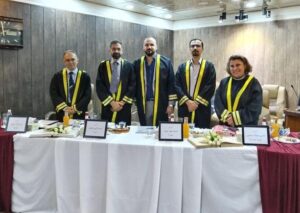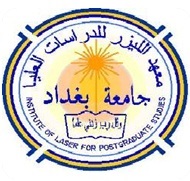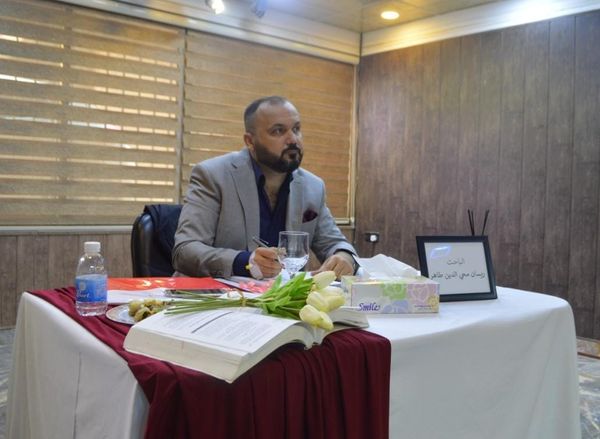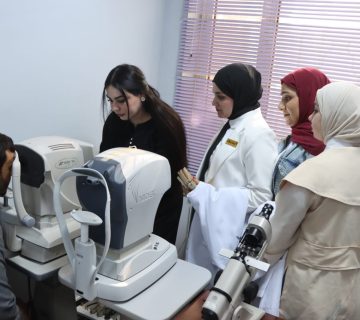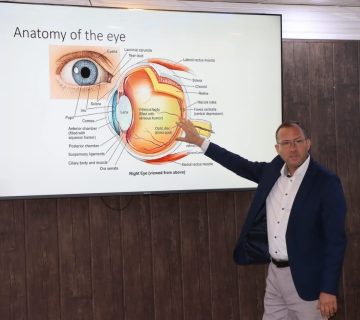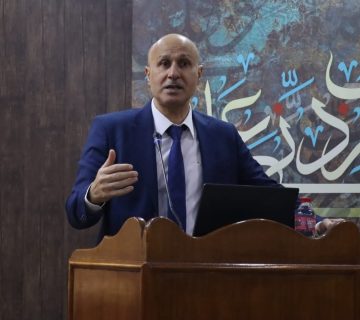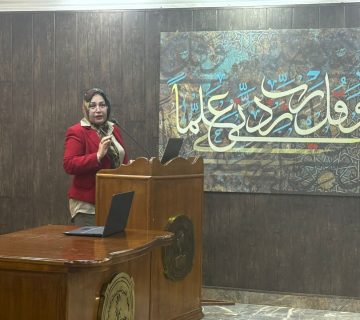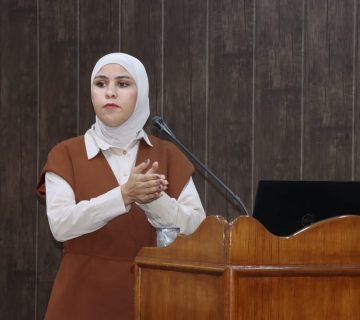The thesis of the master’s student, Raysan Mohieddin Taher, / Laser Applications / Electronic and Communications Engineering, was discussed for his thesis entitled: Construction of Hybrid Sagnac Fiber Interferometer Construction of a saniac hybrid fiber interferometer.
The discussion committee consisted of the gentlemen whose names are listed:
1- Asst. Prof. Dr. Mohammad Karim Daher / Ph.D. Laser. Electro-optics/ The Institute of laser for Postgraduate Studies/ University of Baghdad/ Chairperson
2- Asst. Prof. Dr. Atheer Alaa Sabry / Ph.D. Communications / Electrical Engineering / Department of Technology Communications Engineering / University of Technology / Member
3- Asst. Prof. Dr. Ghassan Nihad Jawad / Ph.D. Electrical and Electronic Engineering / Electronic and Communications Engineering / College of Engineering / University of Baghdad / Member
4- Asst. Prof. Dr. Tahreer Safaa Mansour / Ph.D. Laser/Electronic and Communications Engineering/The Institute of laser for Postgraduate Studies/University of Baghdad/member and supervisor
Whereas the aim of the study is to construct a hybrid fiber saniac interferometer for narrow bandwidth.
One of the most important aspects of this study is the preference for high data rate optical communication systems which are preferred to operate without multiple-access interference (MAI) or minimal interference and phase intensity noise (PIN). This is ensured by an optical narrow band-pass filter designed with a tunable center wavelength, in terms of bandwidth and to increase the system signal-to-noise ratio (SNR).
In this study, tunable narrow-pass filters were designed after using a hybrid saniac interferometer with three different sensor interferometer arms made of etched fiber (PMF) with three cladding thicknesses (112.393, 72.532, 69.651) μm , which were obtained by immersion in acid. HF hydrofluoric acid is used with a concentration of 40%, and the second is used with a hollow core – photonic crystal fibers (HC-PCF) with different lengths (7, 15, 18) cm and (4, 7, 12,30) cm for type (7, 19) cells, respectively, and a third one is used with etched multimodal fibers (MMF), according to the self-imaging phenomena. These designed interferometers were activated by lasers with a specification of 1546.7 nm and 286 picometers with duration of 10 ns.
Tunability was performed in three different states according to the fiber structures by applying physical effects to the two binding regions and to the cross-sectional regions of the fibers to ensure maximum excitation of the higher-order modes.
The results of a hybrid saniac interferometer using (PMF) etched with the same lengths but with three different etching times under adjustable compressive forces lead to the tuning range (1546.750-1546.873) nm for a narrower range, while the wider range in the tuning range was (1546.662-1546.976) nm by means of Drilling time change in addition to the application of mechanical force also with FWHM equal to 123 pcm.
The second configuration of the Hybrid Saniac interferometer using Fabry-Perot HC-PCF, the tuning range was (1546.329-1546.511) nm with shift to blue region and the obtained maximum range was (1546.351-1546.646) nm with FWHM equal to 156 pcm.
The third configuration using (MMF) with self-imaging obtained a tuning range of (1546.822-1546.974) nm for a narrower range and a wider range was (1546.831-1547.007) nm with a FWHM equal to 155 pcm.
Each configuration has a different tuning range according to the effect it is applied to and many lengths or types of optical fibers are used in the Sagnac Hybrid Loop Interferometer. From these results, the maximum tunability was obtained using the Sagnac hybrid interferometer, which consists of a Mach-Zhender loop containing an etched PMF to preserve the fiber by obtaining a FWHM in the spatial range equal to 123 pcm.
Among the most important recommendations of the study:
To achieve efficient transmission of an optical signal over long distances, the noise generated from multiple sources within the optical transmission line is eliminated.
In this work, the noise resulting from the users’ spatial convergence was eliminated. Therefore, designs for optical filters were prepared by adopting optical fibers of three types with special specifications, including a polarization-conserving optical fiber with a polarization dispersion equal to zero.
An optical fiber was designed based on the photonic optical fiber with seven omitted cells. Another narrow-beam spatial filter is a multi-mode de-cored optical fiber with different thicknesses.
In this case, we guarantee connections to users within the DWDM technology within an acceptable S/N ratio.
The researcher obtained a master’s degree with a grade of “very good” due to his real efforts in preparing the thesis.
